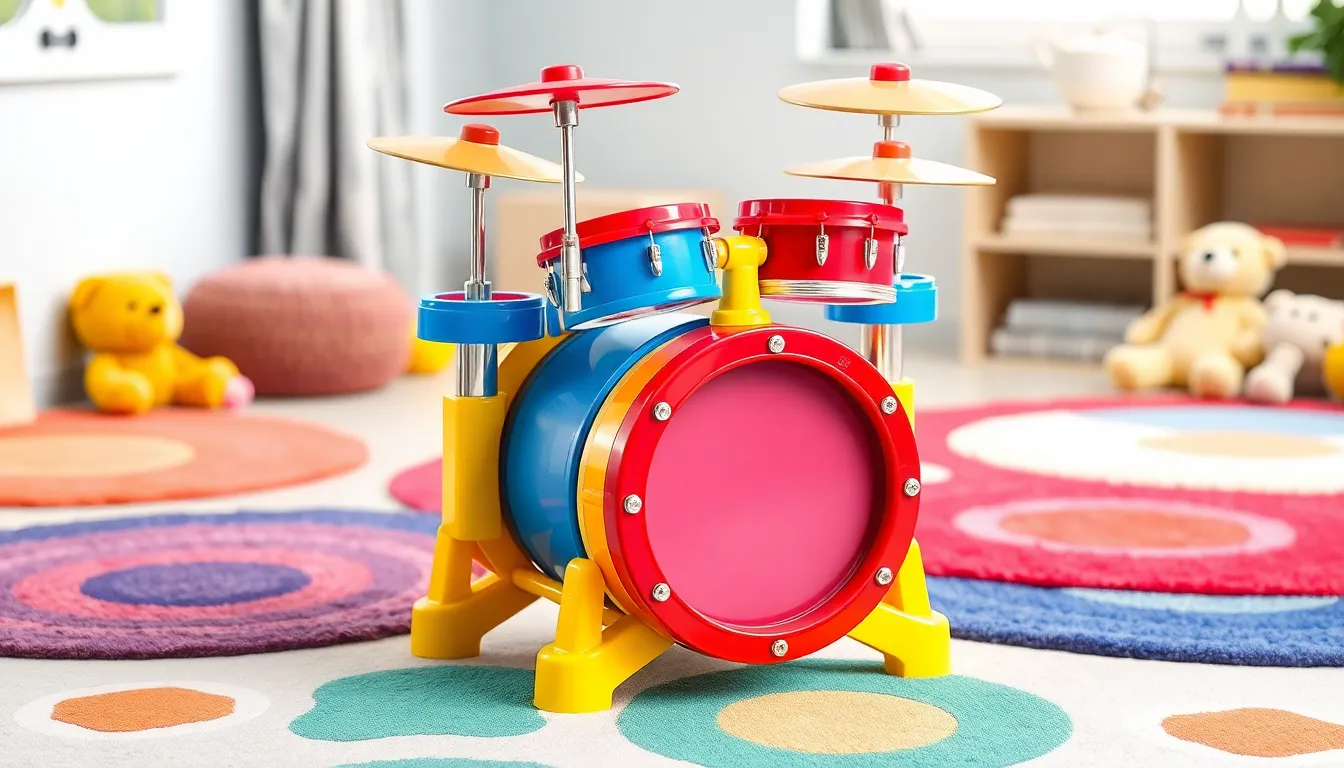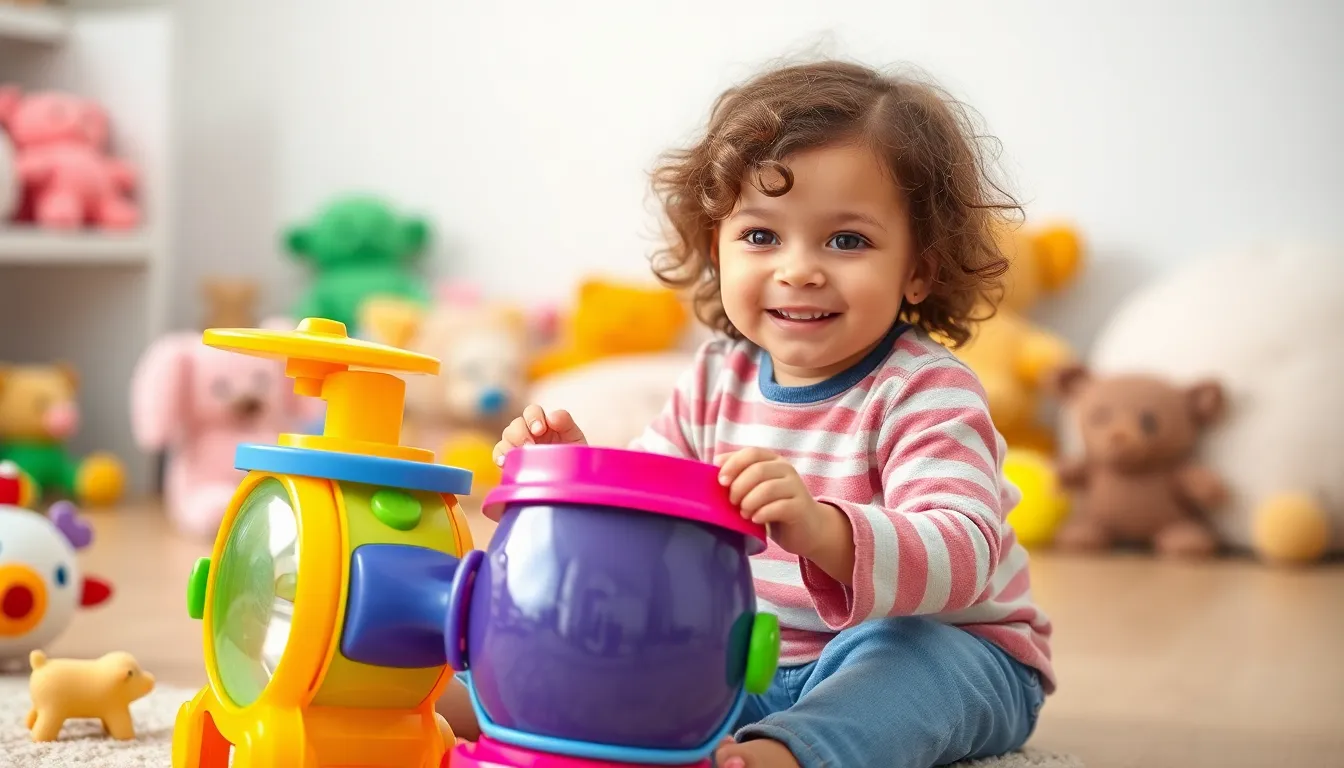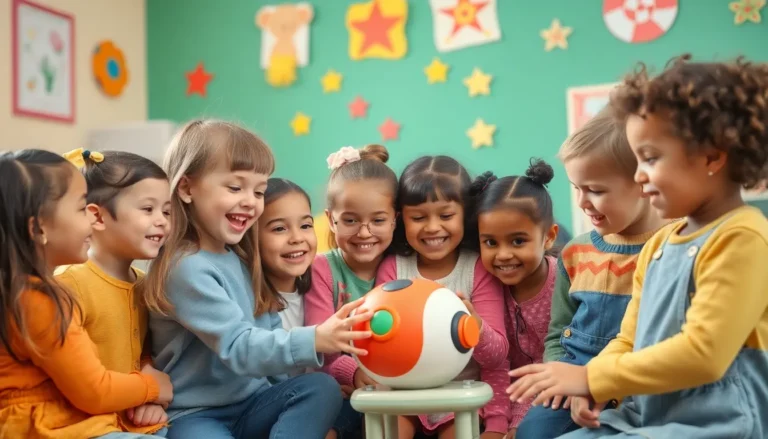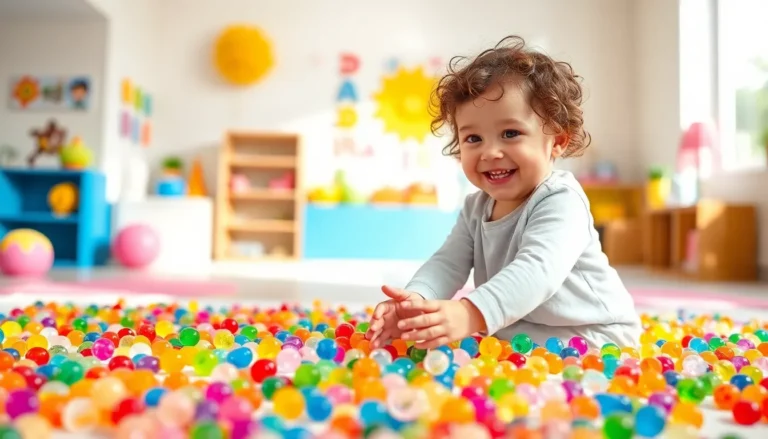Table of Contents
ToggleWhen it comes to nurturing a toddler’s creativity, what could be better than a tiny drum set? Those little hands might not be ready for a full-blown rock concert just yet, but they’re definitely primed for a fun introduction to rhythm. Drums for toddlers offer a perfect blend of entertainment and development, helping them tap into their musical potential while burning off that endless energy.
Benefits of Drums for Toddlers
Drums provide various developmental benefits for toddlers. Incorporating a drum set into playtime fosters growth in multiple areas.
Enhancing Motor Skills
Using drums encourages toddlers to develop fine and gross motor skills. Striking the drum requires coordination between hands and feet. Additionally, this activity promotes hand-eye coordination, vital in toddlers’ overall physical development. Playing different rhythms allows them to exercise their muscles. Drumming also strengthens grip strength as children learn to hold the drumsticks correctly. Frequent practice builds confidence as children see their skills improve.
Promoting Creativity
Drums stimulate creative expression in toddlers. Each child’s unique sounds contribute to their musical exploration. Children use drums to communicate feelings and ideas, fostering emotional development. Experimentation with different rhythms encourages innovative thinking. Moreover, improvisation can enhance problem-solving abilities, allowing kids to express themselves freely. Creating original beats gives children a sense of achievement and nurture their artistic abilities. Overall, drums serve as a platform for young ones to explore their creativity.
Types of Drums for Toddlers

Drums come in various types suitable for toddlers, each offering unique benefits and experiences.
Hand Drums
Hand drums encourage direct interaction with music. These drums, including bongos and frame drums, are easy for small hands to grasp. Toddlers can explore sounds through different strikes and taps, stimulating their auditory senses. Most hand drums are lightweight, which allows for portability and fun anytime. When children use their hands, they enhance dexterity while developing rhythm skills. These instruments offer a hands-on approach to music discovery, making them a popular choice for early musical exploration.
Toy Drum Sets
Toy drum sets provide a complete drumming experience for toddlers. Typically, these sets include a snare drum, bass drum, and cymbals, offering variety in sound production. Sets are often designed with vibrant colors to capture children’s attention. Most toy sets come equipped with lightweight drumsticks, allowing children to imitate real drumming techniques. Playing with drum sets promotes creativity and nurtures a sense of accomplishment. With various sizes and styles available, parents can easily find a kid-friendly option that fits their space and enhances playtime.
Choosing the Right Drum
Selecting an appropriate drum for toddlers requires consideration of several factors. The focus should be on age suitability and safety features.
Age Appropriateness
Age recommendations typically vary by drum type. For instance, hand drums like bongos or frame drums work well for toddlers aged 2-3 years, promoting early rhythm skills. These instruments are lightweight and easy to handle. Toy drum sets appeal to slightly older children, generally ages 3-5, with their vibrant designs and more complex features. At this stage, toddlers explore multiple sounds, developing coordination. Understanding the child’s developmental stage ensures the chosen drum enhances growth and engagement.
Safety Features
Safety is paramount when choosing a drum. Look for instruments free from sharp edges that could pose injury risks. Materials should be non-toxic and durable, ensuring they withstand rough play. Rubber edges or padded surfaces reduce impact, making playtime safer. Additionally, lightweight construction prevents tipping or falling hazards. Regular checks for wear and tear help maintain safety. Selecting a drum with these features secures a fun, risk-free environment for toddlers to enjoy creative exploration.
Introducing Drumming to Your Toddler
Drumming offers a stimulating way for toddlers to engage with music while promoting development. Various activities can spark interest and create a fun learning environment.
Fun Activities
Exploring rhythm through creative play enhances engagement. Tapping a hand drum while singing songs encourages joyful interaction. Introducing simple games like “follow the beat” helps develop listening skills. Engaging toddlers in free play allows them to explore sounds through improvisation. Providing various objects, such as pots or pans, serves as alternative instruments, making rhythm exploration accessible. Small group drumming sessions with family or friends foster social skills. These activities promote coordination while building confidence and excitement.
Encouraging Rhythm and Beat
Establishing a foundation in rhythm requires consistent practice. Clapping hands or tapping feet along with music helps children internalize beats. Introducing basic patterns, such as two taps followed by a pause, makes learning rhythm fun. Utilizing songs with strong beats encourages toddlers to move and groove, reinforcing their understanding. Incorporating dancing alongside drumming strengthens the connection to musicality. Encouraging improvisation develops creativity, empowering toddlers to express themselves freely. Cultivating a rhythmic environment creates opportunities for exploration while boosting coordination and listening ability.
Introducing toddlers to drums offers a wealth of developmental benefits that can shape their early years. Engaging with these instruments not only fosters creativity but also enhances essential motor skills and coordination. With the right choice of drums tailored to their age and safety needs, toddlers can enjoy a fun and enriching musical experience.
Whether through hand drums or toy drum sets, the joy of drumming allows children to express themselves and build confidence. Incorporating playful activities and social interactions further enriches their learning journey. By nurturing a love for music early on, parents can help lay a strong foundation for their child’s future creativity and self-expression.








